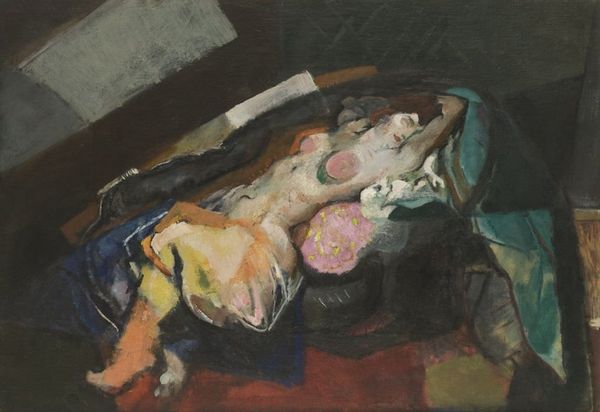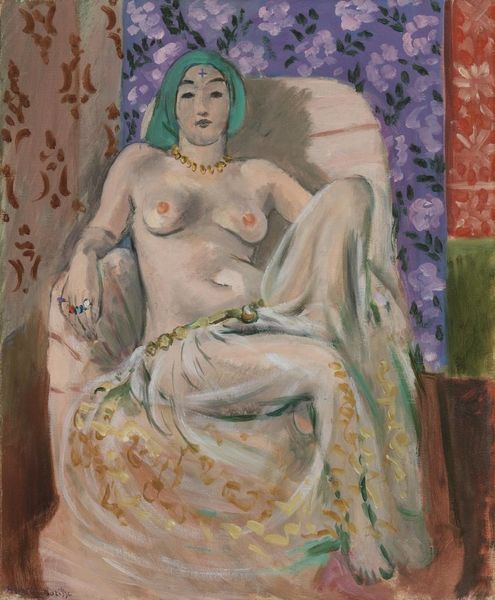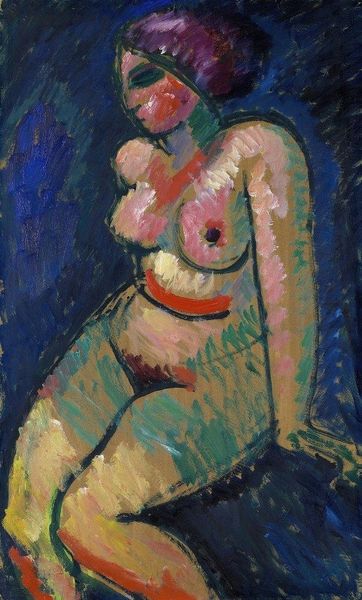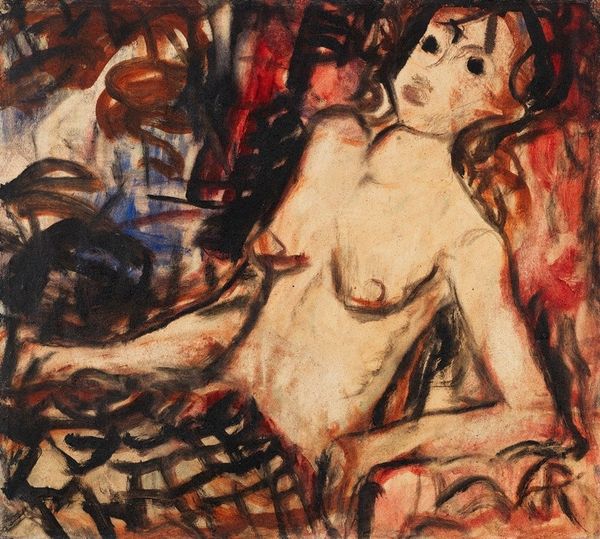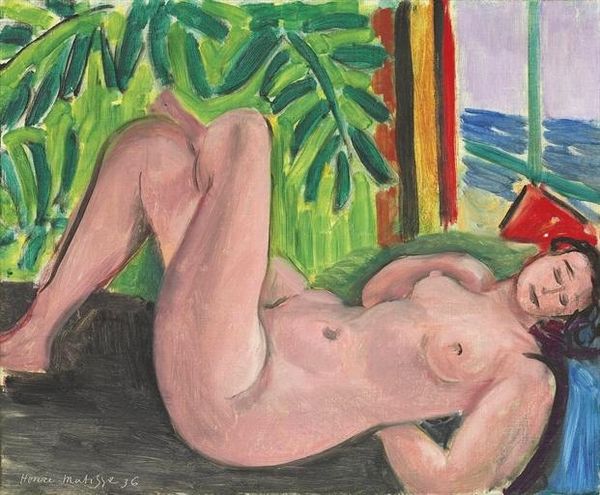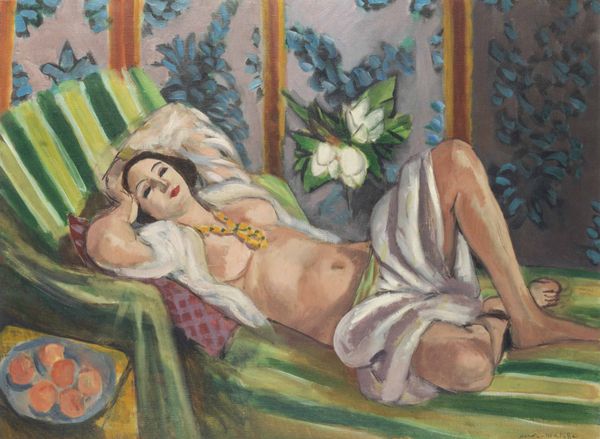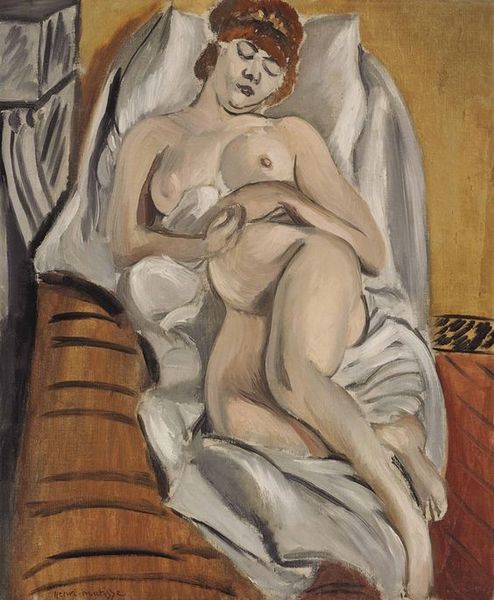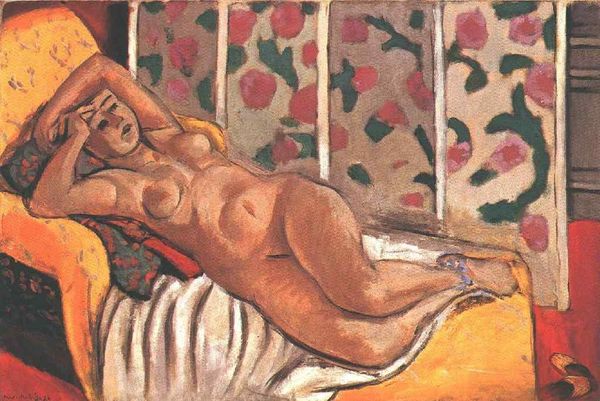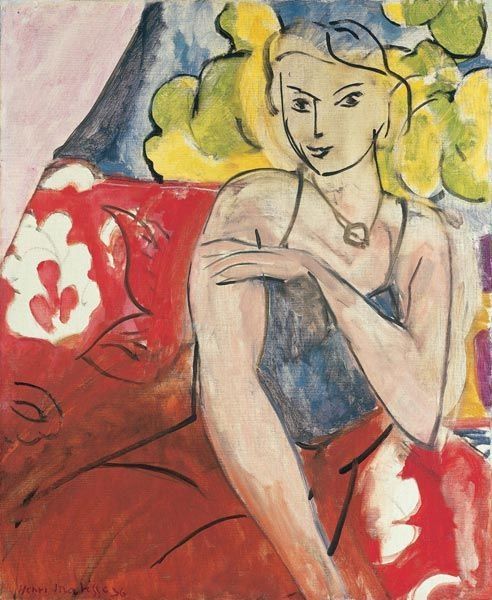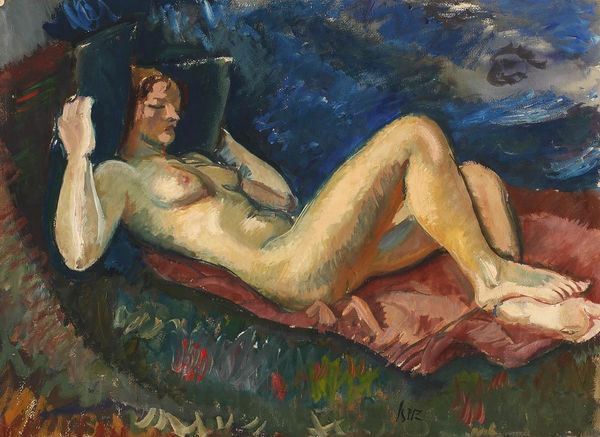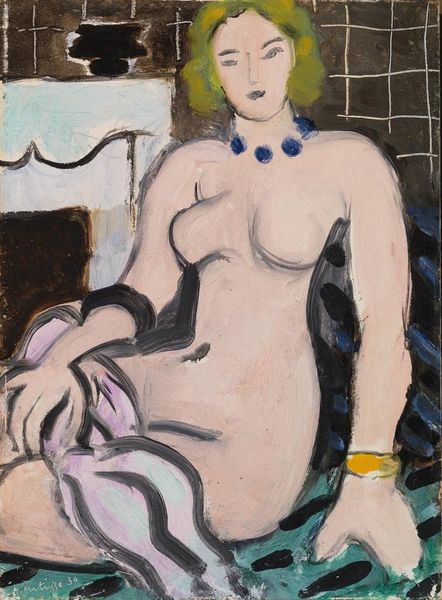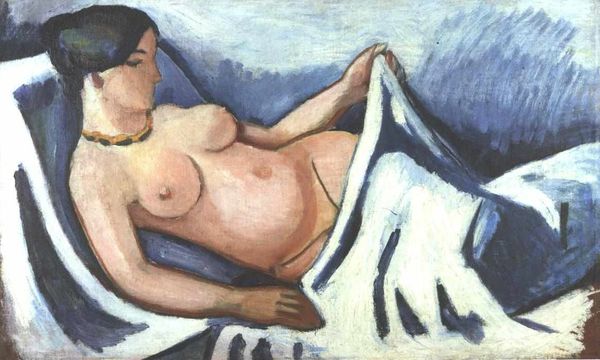
Dimensions: 39 x 61 cm
Copyright: Public domain US
Editor: So here we have Henri Matisse's "Draped Nude," painted in 1922. It's an oil painting of a reclining nude, and what immediately strikes me is the somewhat detached, almost melancholic mood. What do you see in this piece, from your perspective? Curator: I see a layered negotiation of power and representation. Matisse, a man, depicting a female nude – it invites us to consider the gaze, doesn't it? Think about the historical context. This was post-World War I, a period of shifting social norms and anxieties surrounding gender roles. How do you think the draping plays into that? Is it obscuring or revealing? Editor: That's interesting. I hadn't really considered the drape that way. I just saw it as, well, decorative, or maybe about the play of light and shadow. So you’re suggesting it's about something more, maybe the artist is being mindful about representation? Curator: Precisely. The "drape" both conceals and frames. It points to a self-consciousness, a departure from a purely objectifying gaze. But we can't ignore the power dynamics inherent in a male artist representing a female form, even one that appears "draped" and somewhat demure. What tensions arise for you when you think of those dualities co-existing within the artwork? Editor: I guess I'm still processing the duality, how he frames the body and tries to control what’s exposed and hidden. I was focusing too much on the formal elements. Thanks, I’m seeing it with new eyes now. Curator: That’s the exciting part, isn't it? To consider the layers of meaning embedded within even a seemingly simple composition. The piece prompts us to constantly question and re-evaluate.
Comments
No comments
Be the first to comment and join the conversation on the ultimate creative platform.
